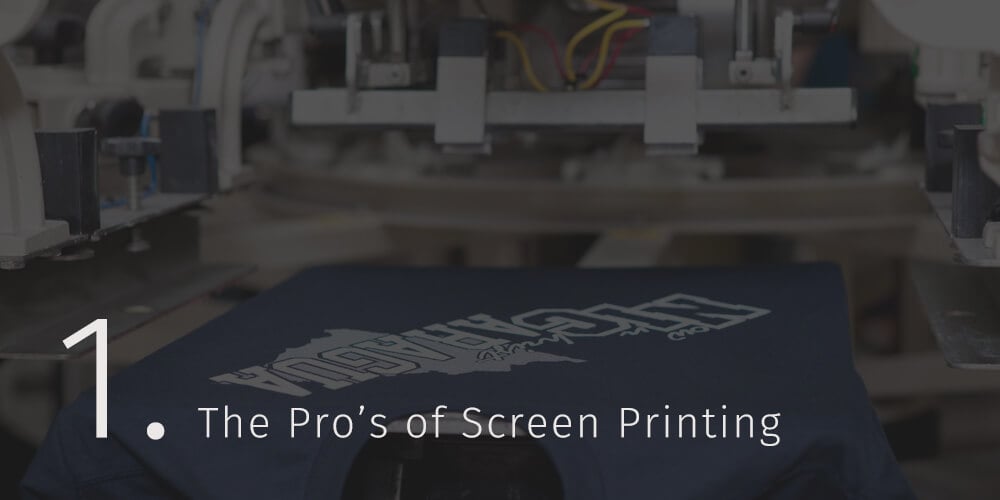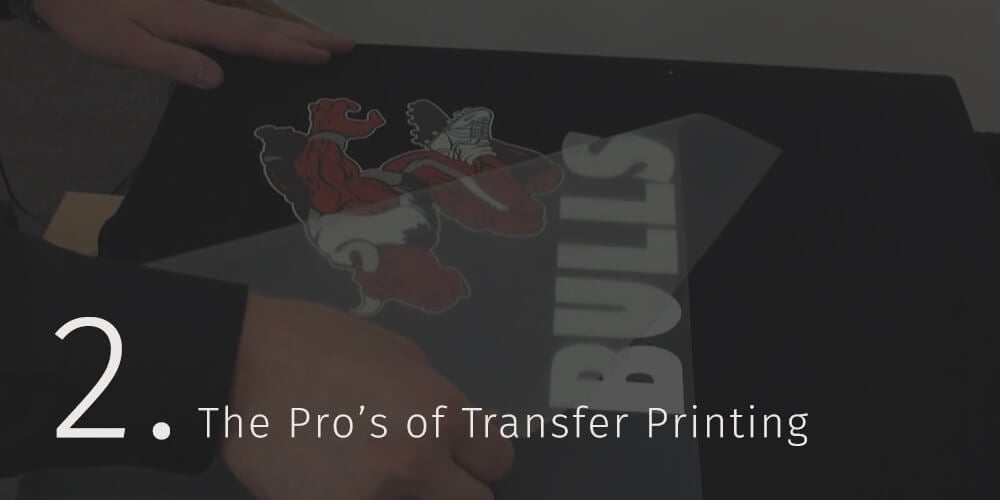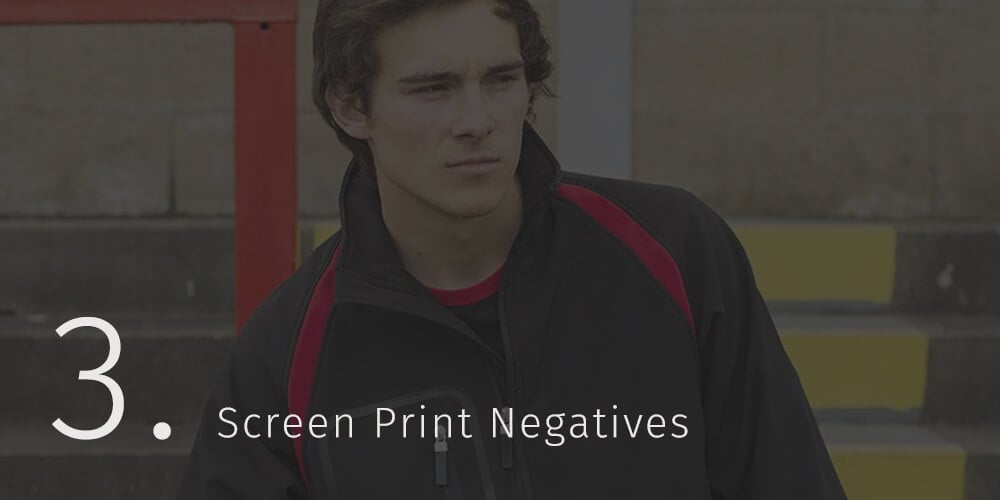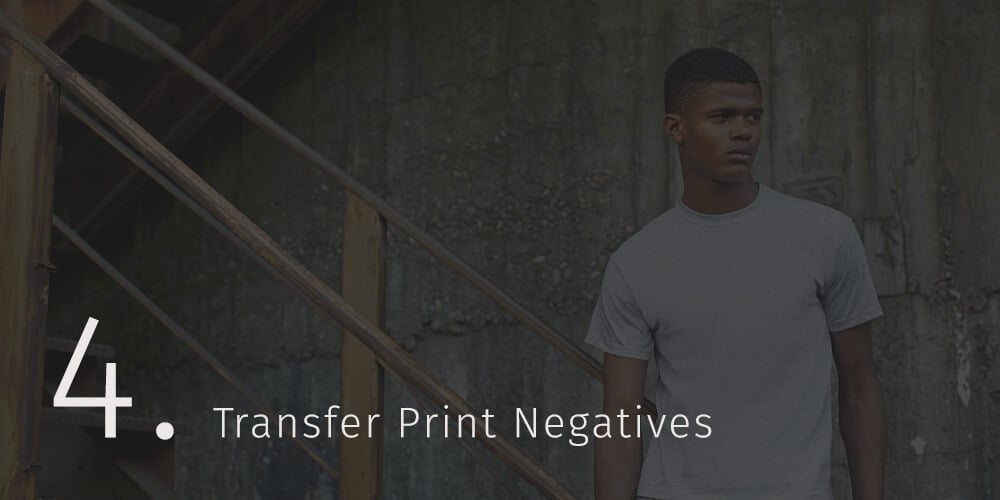Printed Clothing Pros & Cons
The pro’s and con’s, the good, and the not so good of printed clothing.
Printing is just one option for decorating clothing with a logo or message. There are others and each have their own merits. We will look at the benefits and pitfalls of printing onto fabric, which will then hopefully give you all the information you need to decide which decoration method best suit your requirements.
So, what exactly is printing and what does it involve. JKL Clothing offer two types of printed garments, screen printed and transfer printed. Each process has benefits and each has some disadvantages so we will look at each in order to provide a balanced argument for both methods.

The Pro’s of Screen Printing
Durability - Screen printing is when you squeeze print ink through a mesh screen and onto a garment. The fabric absorbs the ink leaving a strong durable printed finish that is unlikely to crack or peel.
Cost effective for large volume orders - The process of screen printing involves setting up a printing carousel that rotates around and automatically applies the ink to the garment. Once set up the process is quick with one person able to add and remove the garments and place them into a dryer.
Cost effective for large print logos - The size of the print does not affect the price so as long as it fits within the screen the cost will not be affected.
Quality print finish - Screen printing delivers a quality printed product with bright colours and small detail easily visible.
Exact colour match - Ink colour can be specified to the exact pantone reference meaning logo’s can be achieved with exact colour specifications.
Perfect for certain fabrics - Screen print ink is perfect for all cotton fabrics. The cotton material accepts the ink well and absorbs into the material to provide a long lasting finished printed product.

The Pro’s of Transfer Printing
Durability - Transfer printing or heat seal printing has had some bad press in the past, but if done correctly onto the correct fabric it will provide a long lasting durable print.
Cost effective for small volume orders - When compared to screen printing, transfer printing can be cost effective for smaller orders. With no costly screen set up costs transfer printing is a good choice for small runs.
Cost effective for logos with many different colours - Prices for transfer printing depends on the size of the logo. Compared to screen printing where the costs are based on the number of colours within the logo this can mean a big difference in overall cost for complicated prints with many colours.
Speed - Transfer printing is quick and easy to produce. Once the design has been agreed orders can be turned around quickly without the wait for screens to be produced or print carousels to be set up.
No minimum order quantities - small orders from as little as one garment can be processed profitably using the transfer print method.
So the above are the positives regarding screen and transfer printing but what are the negatives?

Screen Print Negatives
Cost - On smaller quantity orders the cost of screen printing can be prohibitive. Screen printing requires setting up the print carousel which can be a time consuming task.
Number of colours in the design - The cost is based on the number of colours in the design. For each colour a separate screen is required. For this reason, designs with a large number of colours in can be costly to produce.
Not all fabrics accept the ink - Not all fabrics can be printed on. For example, certain waterproof fabrics and polyesters will not absorb the print ink.
Not all fabrics can be heat dried - The final stage of the screen print process involves the garment going through a dryer to dry the ink. Certain polyester fabrics melt so cannot be dried in this way.

Transfer Print Negatives
Look and Finish - Transfer print uses a vinyl ink that is heat sealed onto the garment. The vinyl finish is not to everyone’s taste and can often provide a shinny finish not suited to some designs.
Durability - Transfer prints are surprisingly durable but there is no getting away from the fact that they are not as robust as screen printed garments. The print must never be ironed directly over and washing instructions always followed. That said we have received good feedback on our transfer printed garments with many prints outlasting the garment itself.
Cost for larger volume orders - The cost of transfer printing does not reduce to any great extent with the number of garments printed. This is because the same process is applied for each individual garment so the same time is taken.
Not all fabrics accept the vinyl transfer ink - Some fabrics cannot be transfer printed onto. The application of the print involves a heat seal so certain polyester fabrics cannot be heated in this way.

That’s it; the, for and against for printed clothing. Hopefully the above will help you decide which print option is best for you, but if not don’t worry. We have trained staff on hand to help and advise you through every step of the way.
To help, we have put together in groups some of our most popular printed clothing products such as printed sweatshirts which can be viewed on our website.
You can get in touch with us via the following means;
- Phone – We are open Monday to Friday from 9am to 5 pm with trained staff available to discuss your printed clothing needs.
- Email – email sales@jklclothing.co.uk we will get back to you ASAP.
- Contact page – Complete a contact page on our website www.jklclothing.co.uk and we will respond by either email or phone.